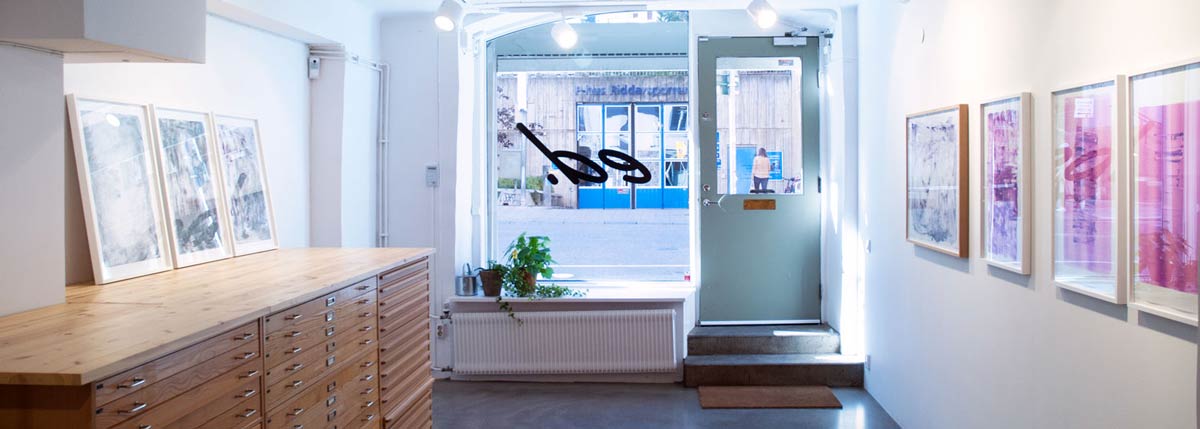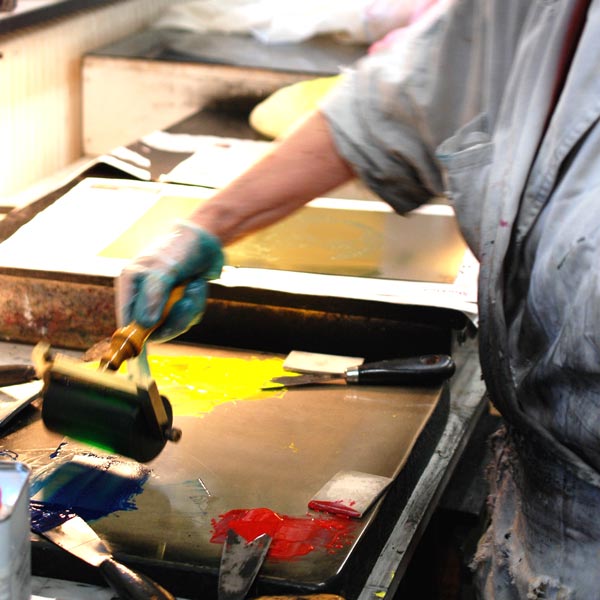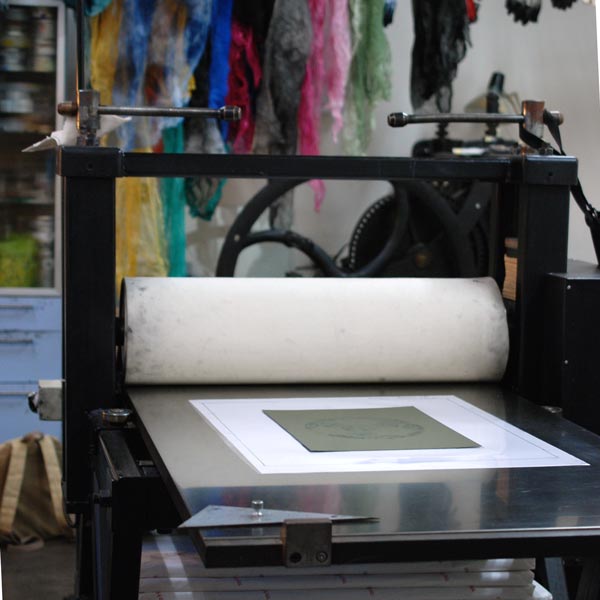
Keep this in mind when buying art online
More and more people are selling art online, and works can cost anywhere between a couple of hundred to many thousands of crowns. As a buyer, how do you know what's a reasonable price to pay? We've assembled a list of questions to help you establish this, which might come in handy when you're buying art online.
In this section:
- Buying art online
- How does ed. art work with selection and pricing?
Buying art online
Is the work unique or is it made in an edition?
Obviously, you pay a different price for an artwork that only exists in one copy than for an artwork made in an edition. Like any other professional, the artist needs a little something to finance the time spent making the piece, costs for material, art studies, etc. The great thing about prints is that by making the artwork in several copies, more buyers effectively share the cost of the production of the artwork. Now, the market for original artworks is a different beast altogether – henceforth, we only refer to editions in this text, as this is ed.art’s field of expertise.
Is the edition limited and numbered, or are there any number of copies?
The size of the edition can vary greatly, and sometimes an artwork is made in an unlimited amount of copies. You pay more for an artwork in a smaller edition than for one in a bigger edition. Sometimes works by well-known artists are made in larger editions to reduce the prices and thus, make the work accessible to more people. Meanwhile, a lesser-known artist may well work in a smaller edition and then the price level of the two different artists will be similar or even the same.
Is the edition signed by the artist or not? Is the work itself signed or will you get a certificate?
Artworks sold in editions ought to be signed by the artist, to ensure that the artist has in fact been involved in the production process of the artwork. The signature should be on the actual artwork (at the front or back doesn't matter) and shows two things. Firstly, that the artist controls the size of the edition and secondly, that the artist has viewed each individual print and approved it. Oftentimes when printing art editions, a professional printer produces the edition based on a ”proof”, jointly developed by the artist and the printer. Then, after the printing process is complete, the artist should sign all of the works to assure that each print meets the artist's expectations.
If you instead receive the artist’s signature on a certificate, it means that the printer or seller doesn't wish to bring the artist in after each printing session. This is often the case with digital prints, as the seller usually prints the works after they've been sold. The artist will sign certificates that are attached to the works once they are produced. This means that the artist has not seen and approved your specific artwork.


Is the edition a reproduction of an original, or is it an artwork in its own right?
In art printmaking, we talk about original prints versus reproductions. An original print is made in a limited edition and is not a reproduction of an original, but an artwork in its own right. This is where it gets complicated, because what is a reproduction, really? Well, say that you have an oil painting on canvas, and you photograph the painting before making some digital alterations to the photograph and then finally, print the photograph to sell in edition. This is an obvious reproduction.
On the other hand, an original print is either done in one of the classic printing techniques, or it is made digitally and printed; so that the print has its own unique expression and cannot be viewed as a copy of an original. Prints made in one of the many printing techniques entails that the artist works directly on a printing medium, such as a plate, and the artwork can't be found any other way. Prints made digitally are heavily manipulated in some way - either the prints are completely data-generated or scanned and then completely altered.
Reproductions should be cheaper than originals, given the artist's level of effort and the unicity of the artwork.
In what technique is the work made? Hand-printed or not?
You can read more about printing techniques in ed. art’s printmaking school. Within the realm of original prints, the classic printing techniques such as etching, screen printing and lithography can be found, but also digital printing. The decisive factors are if the work is an original or a reproduction, and whether or not the edition is limited. Oftentimes today, how the artwork is actually produced has no real effect on the price; but perhaps it should? Etchings and dry-point prints are always hand-printed, whereby plates are inked by hand, and the paper moistened and run with the plate through the printing press. The amount of work for producing a single print can't be compared to the digital process of printmaking. Screen prints and lithographs can also be hand-printed or printed by machine.
Read more about printing techniques
What type of paper and pigments are used?
What determines the longevity of your artwork is the quality of the materials it is made of – the colour and paper. Paper made out of wood contains acids that make it yellow and fragile over the years. The paper must therefore be acid-free - either washed so that the amount of acid is minimized or made of material other than wood. Of these, cotton is the most common. The pigments also lose their lustre and colour if they are not of high quality. How, then, will you know how the artwork is printed? Well, it's not easy to know. If you buy an etching you can be almost certain that it's printed on cotton paper and with colour made of age-resistant pigments. If you buy a digital print, it's not as obvious. There, you'll simply have to trust the seller.
Is the artwork newly produced (first-hand market) or is it sold by a former buyer (secondary market)?
There is a large secondary market for art prints – where e.g. online auction houses often charge relatively low prices for them. Here, a buyer can find works by amazing artists for practically nothing, while works by the same artist in the primary market go for significantly higher prices. The difference is that the artist and/or the printer will be paid if you buy a work in the first-hand market. The artist and the printer should have a piece of the pie for their work with each print, especially in cases where the works are hand-printed. If you buy from an auction house, the former buyer will receive the largest piece of the pie.
How we work at ed. art
How is the selection of artworks made by ed. art?
We try to find a wide range of motifs and expressions, but of a consistently high quality. We do this both by collaborating with established printers and galleries, and by looking for interesting up-and-coming artists ourselves. We act on the first-hand market, which means that the works we sell will always come directly from those who produced them, not from a former buyer. Therefore, there's no measure of speculation - we don't buy cheap to sell expensively. Instead we pay a fixed share to the producer, as soon as the work has been sold.
Why are there twenty works by one artist and just one work of another?
Artists work in very different ways with prints. Some may have printing as their main medium, while others have on occasion been invited by a printer to make a work. ed. art works both directly with artists who've made a lot of prints, and with printers who've collaborated with a lot of artists but have made few prints per artist.
How are the prices set?
The price of a work is set by the artist in collaboration with ed. art and possible printers and galleries. The price may depend on a variety of factors. These include how established the artist is and how much demand there is for the artist’s work, but also what kind of print it is, how large the edition is, how technically complicated the work is to produce, etc.
Do prices include VAT?
Prices listed on ed-art.se include 25% VAT.
Will the artwork I buy be a good investment?
The value of art can go up and down. Art on paper rarely has a good second-hand value. We advise you to buy art mainly because you want to surround yourself with interesting pictures that make life a bit richer. We also advise you to view this cost in a similar way as you would when buying a new couch, i.e. not like a cost you will get back but a cost you pay to enjoy a nicer everyday life.

